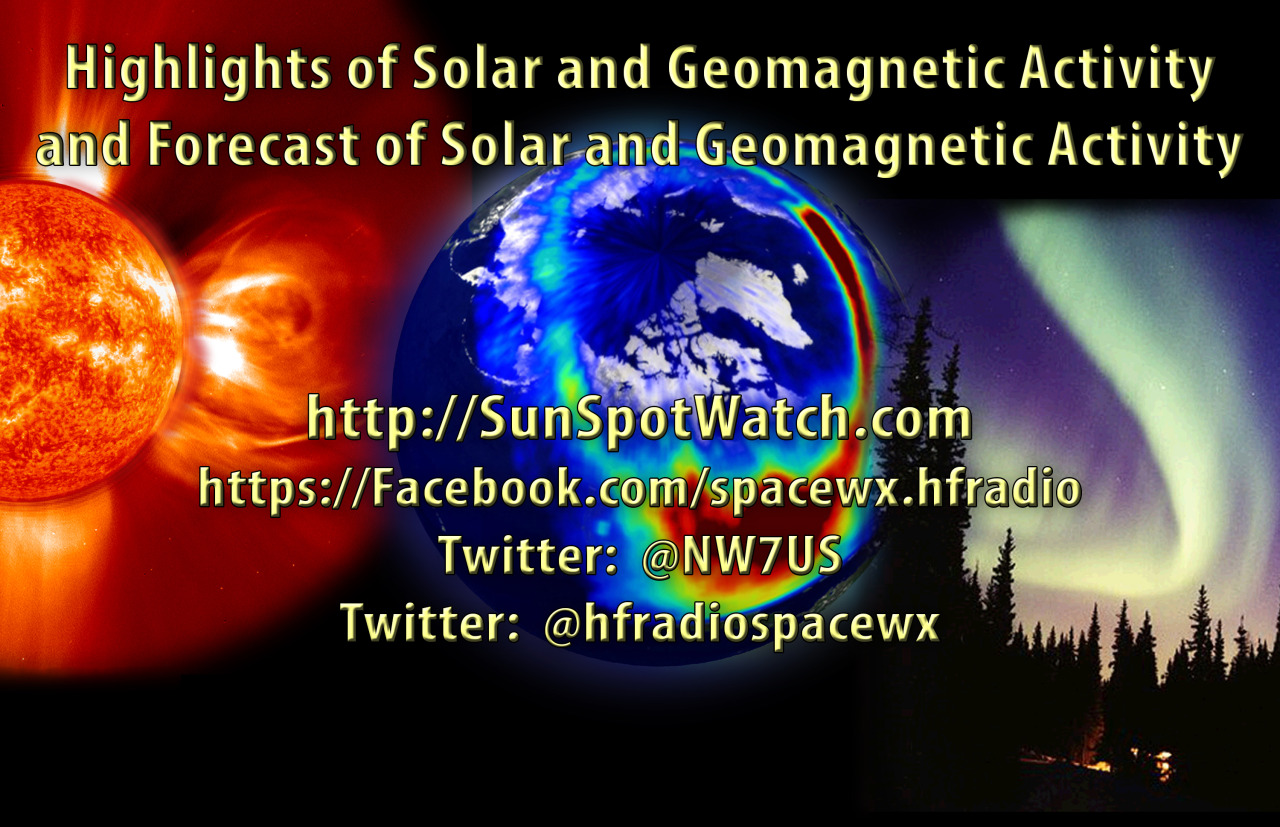 Weekly Propagation Summary – 2016 Jan 25 16:10 UTC
Weekly Propagation Summary – 2016 Jan 25 16:10 UTC
Here is this week’s space weather and geophysical report, issued 2016 Jan 25 0701 UTC.
Highlights of Solar and Geomagnetic Activity 18 – 24 January 2016
Solar activity was at very low to low levels during the period. Only weak C-class flares (<C3) were observed on 20-21 January and 24 January from Regions 2484 (N08, L=094, class/area Dro/030 on 20 January), 2487 (S13, L=336, class/area Dai/100 on 21 January), and 2488 (N04, L=319, class/area Dai/200 on 24 January). Region 2487 was in a growth phase since its emergence on 18 January, but entered into a decay phase after 22 January and was only responsible for three weak C-class flares. Region 2488 continued to exhibit growth since its emergence on the disk on 18 January and was responsible for two weak C-class flares. No Earth-directed coronal mass ejections (CMEs) were observed during the summary period.
No proton events were observed at geosynchronous orbit.
The greater than 2 MeV electron flux at geosynchronous orbit was at normal levels on 19-20 January, moderate levels on 21 January and high levels on 18 January and again on 22-24 January. The maximum flux of the period was 12,881 pfu observed at 24/1550 UTC.
Geomagnetic field activity ranged from quiet to major storm (G2-Moderate) levels. The period began under quiet conditions for the majority of 18 January. At approximately 18/2056 UTC, a small shock was observed in ACE data indicating the arrival of a CME from a filament eruption on 14 January. Total field (Bt) initially increased from 6 nT to 12 nT with solar wind speed increasing from 300 km/s to near 380 km/s while the Bz component fluctuated between +6 nT and -9 nT. By 19/0935 UTC, the Bz component deflected north and total field increased to 14 nT. A subsequent rotation of the Bz component occurred after 20/0325 UTC to a maximum of -13 nT followed by another increase in the total field to a maximum of 21 nT at 21/0545 UTC. By this time, the Bz component was fluctuating between +/-18 nT. By 21/1006 UTC, Bt decreased to around 8 nT, while the solar wind speed increased to around 530 km/s as the solar wind began to transition into a negative polarity coronal hole high speed stream (CH HSS). The geomagnetic field responded with an unsettled period late on 18 January, quiet to active levels on 19 January, quiet to minor storm levels (G1-Minor) on 20 January, and unsettled to major storm levels (G2-Moderate) on 21 January. Solar wind speeds continued around 500-550 km/s under CH HSS influence until late on 23 January. Solar wind speeds continued to be elevated in the 450-500 km/s range through the end of the period. As a result, the geomagnetic field was at quiet to active periods from 22-24 January.
Forecast of Solar and Geomagnetic Activity 25 January – 20 February 2016
Solar activity is expected to be at very low to low levels with a slight chance for an M-class flare (R1-R2, Minor-Moderate) from 25-31 January as Region 2488 continues to develop.
No proton events are expected at geosynchronous orbit.
The greater than 2 MeV electron flux at geosynchronous orbit is expected to be at mostly high levels due to recurrent CH HSS activity. A return to moderate levels is expected on 25-26 January, 07-08 February, and 14-18 February.
Geomagnetic field activity is expected to be at unsettled to active levels from 25-30 January, 02-03 February, 07-10 February, and 17-20 February due to recurrent CH HSS activity.
Don’t forget to visit our live space weather and radio propagation web site, at: http://SunSpotWatch.com/
Live Aurora mapping is at http://aurora.sunspotwatch.com/
If you are on Twitter, please follow these two users: + https://Twitter.com/NW7US + https://Twitter.com/hfradiospacewx
Get the space weather and radio propagation self-study course, today. Visit http://nw7us.us/swc for the latest sale and for more information!
Check out the stunning view of our Sun in action, as seen during the last five years with the Solar Dynamics Observatory (SDO): https://www.youtube.com/watch?v=zXN-MdoGM9g
We’re on Facebook: http://NW7US.us/swhfr














